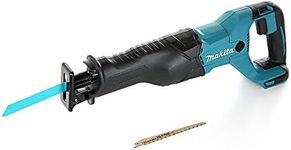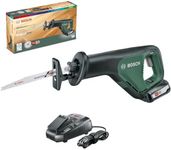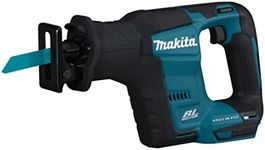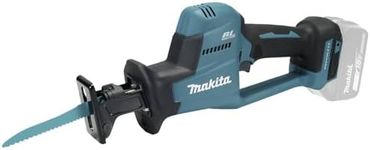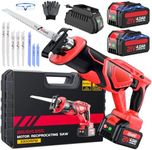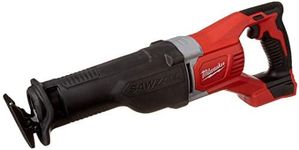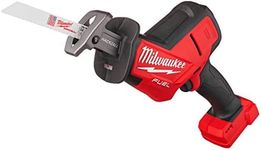Buying Guide for the Best Reciprocating Saws
Reciprocating saws are versatile power tools used for a variety of cutting tasks, from demolition work to pruning trees. They are known for their back-and-forth motion, which allows them to cut through different materials like wood, metal, and plastic. When choosing a reciprocating saw, it's important to consider the specific tasks you plan to use it for, as this will guide you in selecting the right features and specifications that match your needs.Power SourceReciprocating saws can be powered by electricity (corded) or batteries (cordless). Corded saws offer continuous power and are ideal for heavy-duty tasks where you don't want to worry about battery life. They are best suited for use in areas with easy access to power outlets. Cordless saws, on the other hand, provide greater mobility and are perfect for outdoor use or in locations without power access. When choosing, consider whether you need the freedom to move around or if you'll be working in a fixed location.
Motor PowerThe motor power of a reciprocating saw is measured in amps for corded models and volts for cordless models. Higher amp or volt ratings generally mean more power, which is important for cutting through tougher materials. For light-duty tasks like pruning or cutting thin materials, a lower power saw (around 5-8 amps or 18-20 volts) may suffice. For more demanding tasks like demolition or cutting thick metal, look for higher power (10-15 amps or 20-60 volts). Choose based on the toughest material you expect to cut.
Stroke LengthStroke length refers to how far the blade travels in one back-and-forth motion. Longer stroke lengths (around 1-1.5 inches) allow for faster cutting, especially in thicker materials, as they remove more material per stroke. Shorter stroke lengths (less than 1 inch) can offer more control and precision, which is useful for detailed work or cutting in tight spaces. Consider the type of work you'll be doing; if speed is a priority, opt for a longer stroke length.
Variable SpeedVariable speed control allows you to adjust the speed of the saw blade, usually measured in strokes per minute (SPM). This feature is important because different materials require different cutting speeds for optimal results. For example, cutting metal typically requires a slower speed than cutting wood. A saw with variable speed settings (ranging from 0 to 3,000 SPM) provides flexibility and precision, making it suitable for a wider range of tasks. Choose a model with this feature if you plan to work with various materials.
Blade Change SystemThe blade change system determines how easily you can replace the saw blade. A tool-less blade change system allows you to swap blades quickly and without additional tools, which is convenient and time-saving, especially if you frequently switch between different types of blades for various materials. If you anticipate changing blades often, look for a saw with a user-friendly blade change system to enhance your efficiency and ease of use.
Weight and ErgonomicsThe weight and ergonomics of a reciprocating saw affect how comfortable it is to use, especially for extended periods. Lighter saws are easier to handle and reduce fatigue, making them suitable for overhead work or prolonged use. However, heavier saws may offer more stability and control for precise cuts. Ergonomic features like a comfortable grip and vibration reduction can also enhance user comfort. Consider how long you'll be using the saw and the types of tasks to determine the best balance of weight and ergonomics for you.

